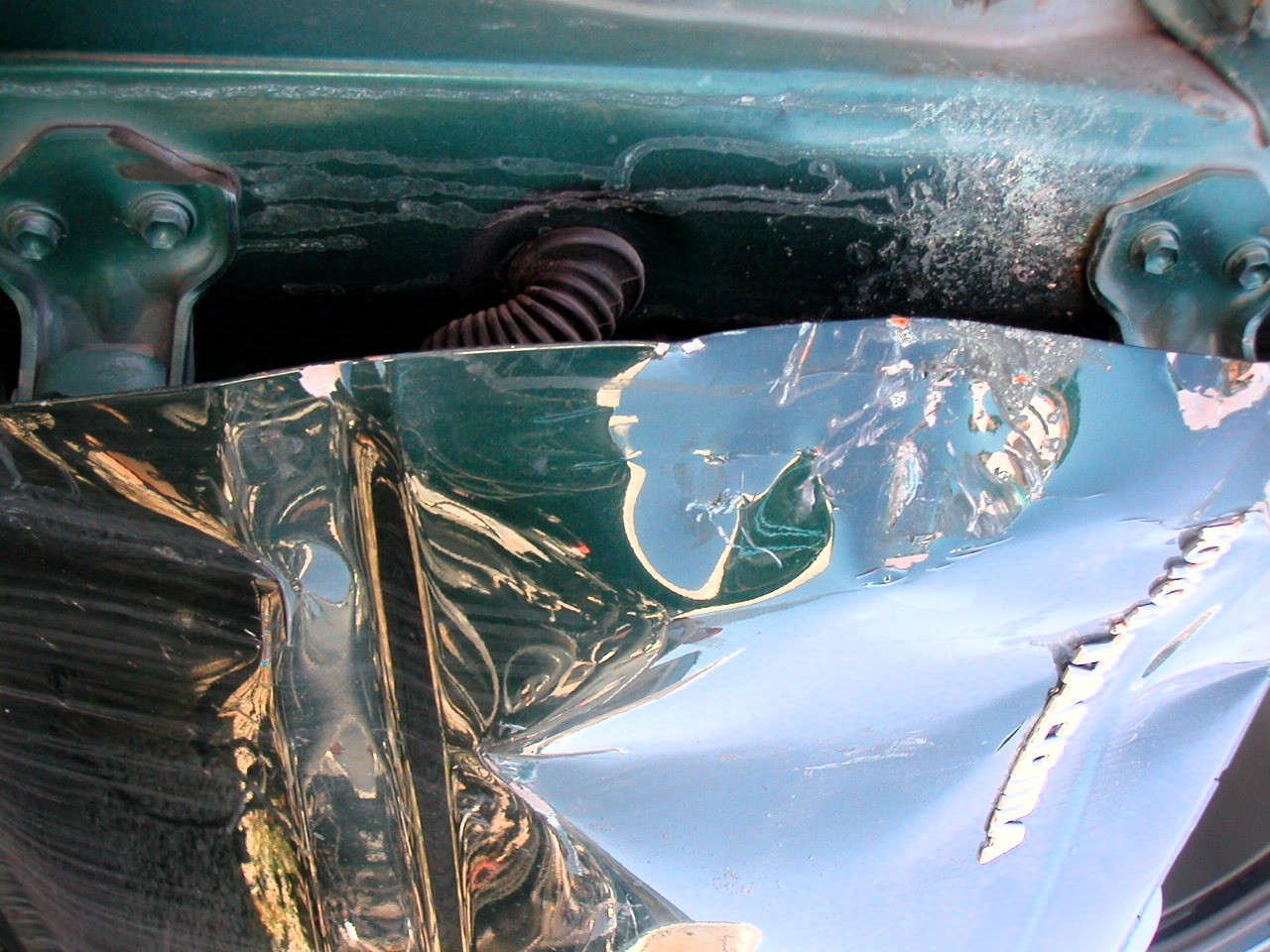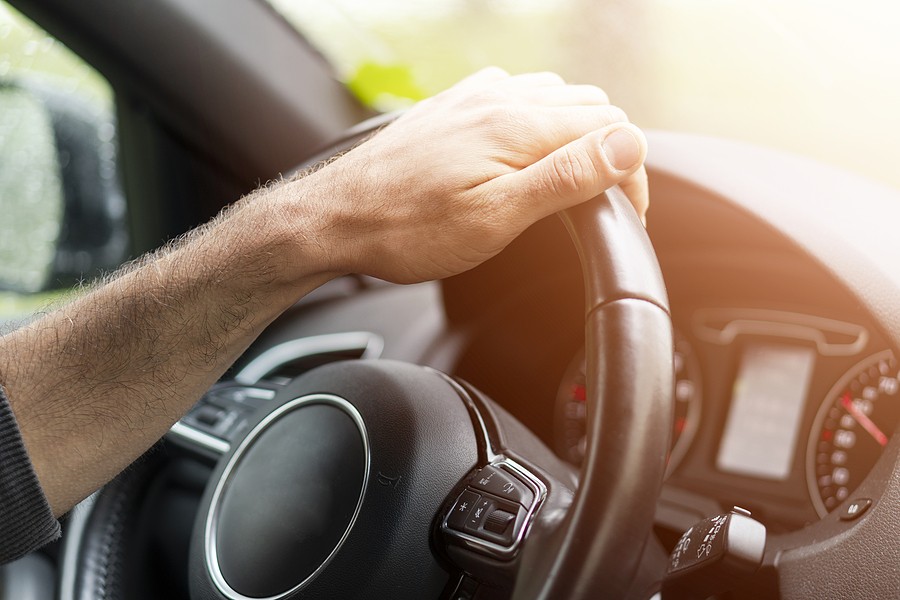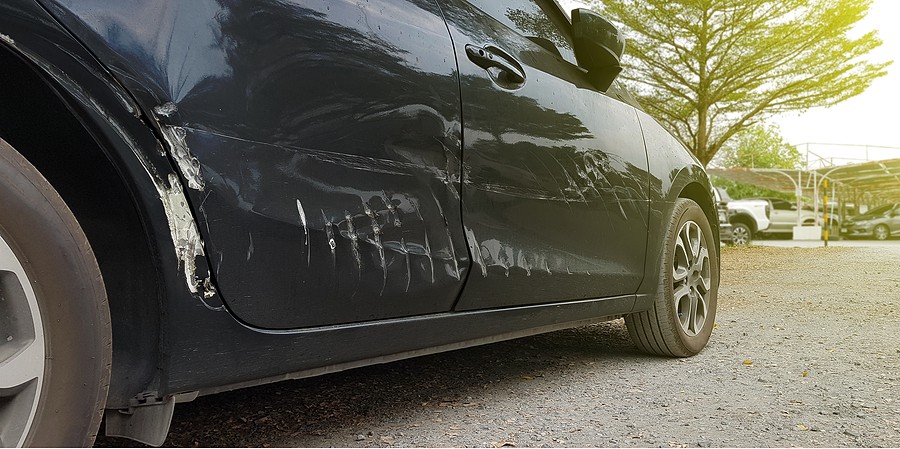How to fix small door dents at home? Door dents are a common occurrence in any area with heavy traffic. They can be discouraging to see, but they're easy to fix.
It's happened to all of us. You're driving down the street, minding your own business, when suddenly you hear a loud BANG! You quickly check the rearview mirror and see a small dent in your car. Ugh!
If only there were a way to fix it at home without taking it to the shop. Well, lucky for you, there is!. Even if you have never attempted this before, it is not difficult and can be done by anyone who has the time and willingness to do so.
All it takes is some patience, elbow grease, and a little know-how about how to best use the materials at hand. It will take less than an hour for most people. This article will show you how to fix small door dings at home using some basic supplies. So read on and get started on “how to fix small door dents at home?”!

What are door dents?
Dents form from a sharp blow to the exterior of a car. Most door dings are caused by doors that have been opened too quickly or struck with another object, such as another car. A door ding is typically smaller than a dent and is rarely serious enough to affect the structural integrity of your vehicle.
What causes door dents?
Dents are usually caused by carelessness. Most people do not try to ding a car, but it is an accident that can happen in parking lots and other places where there is heavy traffic of vehicles. Small children and pets also play a role: they might accidentally open the back door and hit another vehicle with it, causing a ding. If you park on the street or in public parking lots, do not leave valuables visible in your car to help reduce the chances of someone intentionally damaging your vehicle.

More specifically, there are ten common causes for door dings:
1. The biggest cause of small dents is usually from car doors being opened too fast and hitting another vehicle or object. This is often the driving factor why most people end up with a dent in their car at some point or another.
2. Another common cause of door dings is someone opening their door without checking the mirror, leaving their door open just a bit too long to allow another vehicle or object to come into contact with their door.
3. Pets are also the culprits of dings in some cases, as they may jump up and put their paws against the closed car door, causing it to fly open, which can suddenly cause an instant dent. This is especially common if you have smaller children who like to let the family pets inside your car with them.
4. Another cause of parking lot dings is something falling out of someone's hands and striking your vehicle's exterior, usually due to distracted drivers.
5. Car doors that are struck by other vehicles or objects during parallel parking situations often leave behind small yet noticeable dents, particularly on vehicles that have been parked close to another car.
6. Another cause of dings is when a driver backs out from their parking spot and bumps into something, whether another vehicle, tree, or pole.
7. New drivers tend to have the most dents due to being inexperienced with how to drive in heavy traffic or crowded areas. For example, parallel parking spots are the trickiest areas that generate door dings on new drivers who aren't used to these situations yet.
8. If you live in an area where there is salt on the road during the winter months, this can cause corrosion on your car's metal exterior, which can lead to rust if left untreated for too long, resulting in falling chunks of rust falling off your car's body onto the street which people will have to avoid hitting. These can cause small dents in your car's exterior.
9. Water collected on the outside of your vehicle when it rains, if not dried off quickly enough, can pool on various areas of your car's exterior, which can result in rusting and water stains that often lead to more rusting of your car's exterior.
10. Faulty design of certain vehicles can also cause, especially if you have an older model of vehicle that tends to have more dents due to the build material not being very strong or durable. This is usually common in older cars or trucks where plastic bumpers were used, which would easily dent if hit by another vehicle.
How To Fix Small Door Dents At Home?
If you're planning to fix your car dents at home, follow these ten simple steps:

Safety first
First, wash your hands thoroughly before handling any car dents.
Flatten the dent out
Use a flathead screwdriver to gently pry off the metal around the dent so you can flatten it out with wooden toothpicks or an object of similar size and shape. If there's glue, remove it with nail polish remover or rubbing alcohol.
Dents with water damage
For dents with water damage, you will need to dry the area soon after it's happened, so rust doesn't form. If you can't reach all of the water with a vacuum, use paper towels instead. Ensure you get rid of excess moisture without causing additional damage to your car or leaving any debris behind.
Consider commercial products
There are various chemicals that you can buy at stores like Home Depot or Walmart that work well for removing paint and primer before using an automotive body filler spray on the area where there is now bare metal showing through the exterior paint job, which should be sprayed onto the affected area in little dabs followed by repeated layers until it dries rock hard to repaint over it once it's fully dried finally.
Dents on plastic bumpers
If you have a plastic bumper, then another way to fix your car's dents is by applying heat with a hairdryer along with light pressure, which will cause the affected area to expand and contract back into its original shape. Just make sure that you don't apply too much heat as that can lead to even more damage done, leading up to blowing out your car's interior due to all of the heat buildup inside. However, this method works well if you want an instant fix without waiting for any chemicals or glues to dry before using wooden toothpicks or similar objects.
Dents on metal vs. plastic bumpers
This procedure is somewhat different with any metal exterior than working on plastic bumpers because there are far fewer chances of expanding and contracting the area in which you plan to use chemicals. So instead of using heat, the only way to fix dents on metal car surfaces is by using a body filler spray (like Bondo), working with smaller amounts at one time, and allowing it to dry completely before adding another layer after several layers have dried, sand down each layer gently with high-grit sandpaper until it's flush with the rest of your car's exterior.
Perform a second visual inspection
Once you've fixed all of the little door dings visible from the outside of your car, go through each you can see inside your vehicle and work on those too if there are any present. It's an easy process, but most people don't want to bother learning how or don't take the time to because it is somewhat tedious and time-consuming.
Prevent dents from re-occurring
After you've fixed all of your car's dents, if your warranty doesn't cover them, then it would be a good idea to keep them from re-occurring again in the future by investing in some paint protection film which can either be installed by yourself or you can find a good mobile installer to come to your home and install it for you.
Paint after removing dents
If the paint on the exterior of your car is starting to look dull or faded, there are several products that you can buy in stores like Walmart and Pep Boys (or online), which will restore brand new looking shine and luster to your car. You can use this product on the rest of the exterior (and interior) if you want, which won't take long to complete at all and will result in a like-new shine that's very noticeable.
Consider professionals with complicated dents.
If you don't plan on fixing the dents yourself, you can always head over to your nearest dealership or body shop and have them do it for you. However, this can be costly as they will likely replace your car's entire exterior, which means that the new paint job won't match up to the old one due to being manufactured by different people in a different factory, so repainting your car with its original color code would be best if you plan on not getting any more dents in the future.
What are the best ways to prevent door dents?
Dealing with car dents is annoying enough but getting them in the first place is even worse.
This leads to people wondering how they can prevent dents from happening in the first place. If you're interested in not worrying about dents ever again, there are several steps to take.

Park in a garage whenever possible
This is the easiest and cheapest way to prevent dents on your car's paint job. If you have no garage and live in a climate where it snows in the winter, clean off your car after each snowfall before you drive again. If you take this method and maintain it, you'll never have to worry about your car's exterior because the only way that a dent could form is if someone crashes into you when driving, which isn't likely at all.
Take good care of your car's exterior.
Suppose you always keep up with basic maintenance such as washing your car when necessary and waxing/polishing. In that case, this will help prevent dings because when these types of materials are present on your car's exterior, they fill in all of the tiny microscopic gaps where moisture could seep through and cause damage to your paint job below. So, in essence, maintaining the condition of your car keeps its exterior in the same shape as the day you bought it.
Preventing door dings is just a matter of using common sense.
When you park, always use your common sense judgment and look around to see if any other objects are too close to your car. Look underneath your vehicle before you open the door because there could be something small like a rock or big like a motorcycle parked in too close, which would cause damage. If you take these simple precautions every time that you park, door dings will never become an issue for you in the future because you'll prevent them from ever happening by paying attention.
Never double-park
If parking next to someone else, don't expect them to move their car for yours when it's time for everyone to leave at once. Double-parking is rude! You're not only blocking the person behind you but also yourself too. If everyone double-parks, everyone would be stuck, and no one would move anywhere.
Always keep your car locked while parked.
If you leave a spare set of keys in your glove compartment, a thief might use them to open your door and drive off with whatever is inside. So be smart with your valuables, and remember that they are most at risk when you park your car because thieves can break into it much easier when it's standing still without any chance of running away!
Tools needed for this procedure?
To fix car door dents at home, you'll need to prepare certain tools that allow you to manipulate the car's exterior effectively. Regular household items such as glue, rubbing alcohol, powder coating paint, and baking soda can come in handy for this task.
How to fix small door dents at home? Conclusion
The best way to prevent car door dings is with common sense. Take precautions before parking your car, such as looking for obstacles and double-checking that the area around your vehicle is clear of other cars. Then, you'll never have to worry about a dent in your exterior paint job again.
To fix these small door dings at home, be sure to prepare certain tools, including glue, rubbing alcohol, powder coating paint, and baking soda, which will allow you to manipulate the exterior surface of your car effectively.
It's important to keep up with basic maintenance and follow safety procedures when it comes time to park so that no one ever has an excuse for getting into an accident or breaking any laws because they weren't paying attention.




